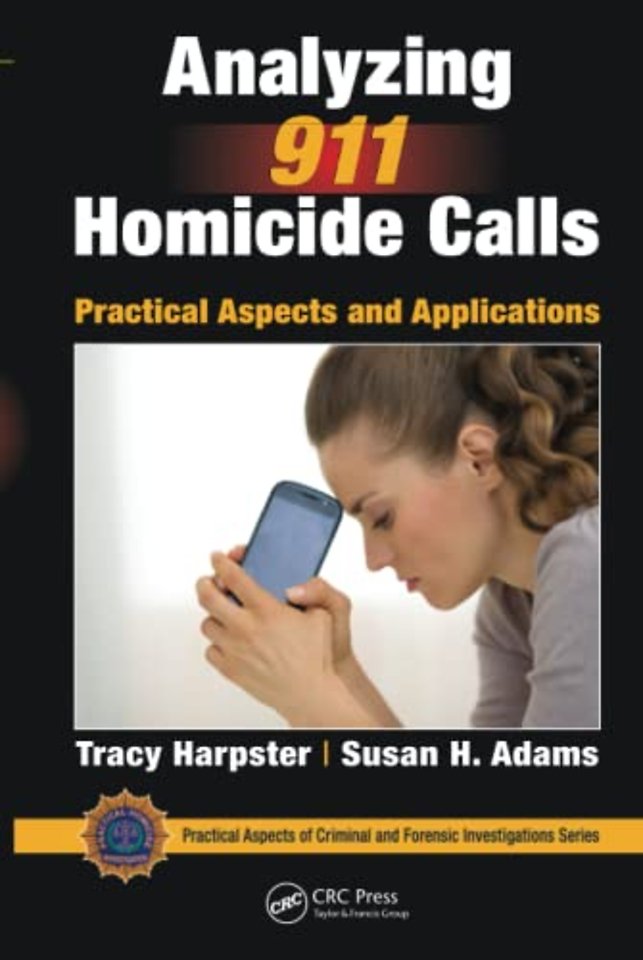Analyzing 911 Homicide Calls
Practical Aspects and Applications
Samenvatting
This book provides police investigators and homicide detectives with a practical method of analyzing 911 homicide calls to uncover the truth. A structured analysis of 911 homicide calls can directly aid in developing investigative leads, planning interviews and solving cases.
Case examples present proven, reliable methods as to when a caller is telling the truth or not. This book lays out a framework to analyze the call to determine truth from fiction.
Every member of the investigative team, from call-taker to first responder, investigator, coroner’s investigators, and prosecutor, can contribute to the success of investigations through their knowledge of 911 call analysis.
Specificaties
Inhoudsopgave
Acknowledgements
Authors’ Note
Foreword
Part 1: Introduction
Chapter One: The Critical Value of 911 Call Analysis
Chapter Two: Case Study: Mr. and Mrs. Hunt
Part 2: Who Is the Call About?
Chapter Three: Does the Caller Demand Help?
Chapter Four: Does the Caller Provide an Immediate Assessment of the Victim?
Chapter Five: Who is the Caller’s Focus?
Chapter Six: Does the Caller Accept the Victim’s Death?
Chapter Seven: Does the Caller Provide Aid to the Victim as Directed?
Part 3: What is the Call About?
Chapter Eight: Is the Information Relevant?
Chapter Nine: How Does the Caller Describe the Situation?
Chapter Ten: How Does the Caller Prioritize the Information?
Chapter Eleven: How Does the Caller Describe the Conditions?
Part 4: How is the Call Made?
Chapter Twelve: Does the Caller Express Urgency or No Urgency?
Chapter Thirteen: Is the Caller Fearful?
Chapter Fourteen: Is the Caller in Close Proximity to the Victim?
Chapter Fifteen: Does the Caller Begin with Initial Sounds or Initial Delays?
Chapter Sixteen: Does the Caller Use Aggressive Demands or Passive Defenses?
Chapter Seventeen: Does the Caller Show Cooperation with Dispatcher or Resistance to Dispatcher?
Part 5: Independent Guilty Indicators
Chapter Nineteen: Awkward Phrases
Chapter Eighteen: Attempts to Convince
Chapter Twenty: Conflicting Facts
Chapter Twenty-One: "Huh?" Factor
Chapter Twenty-Two: "I Don’t Know"
Chapter Twenty-Three: Isolated "Please"
Chapter Twenty-Four: Lack of Contractions
Chapter Twenty-Five: No Modulation
Chapter Twenty-Six: Unexplained Knowledge
Chapter Twenty-Seven: Indicators Trending Toward Guilty
Part 6: The Big Picture
Chapter Twenty-Eight: Does the Call Match the Scene?
Chapter Twenty-Nine: Create a Timeline: Murder Does Not Happen in a Vacuum
Part 7: 911 Analysis Tips for the Law Enforcement Team
Chapter Thirty: 911 Analysis Tips for Dispatchers
Chapter Thirty-One: 911 Analysis Tips for Patrol Officers
Chapter Thirty-Two: 911 Analysis Tips for Investigators
Chapter Thirty-Three: 911 Analysis Tips for Prosecutors
Chapter Thirty-Four: Case Studies
Epilogue
Appendices
Appendix A: Case Study Analyses
Appendix B: Glossary of Terms
Index
Anderen die dit boek kochten, kochten ook
Net verschenen
Rubrieken
- aanbestedingsrecht
- aansprakelijkheids- en verzekeringsrecht
- accountancy
- algemeen juridisch
- arbeidsrecht
- bank- en effectenrecht
- bestuursrecht
- bouwrecht
- burgerlijk recht en procesrecht
- europees-internationaal recht
- fiscaal recht
- gezondheidsrecht
- insolventierecht
- intellectuele eigendom en ict-recht
- management
- mens en maatschappij
- milieu- en omgevingsrecht
- notarieel recht
- ondernemingsrecht
- pensioenrecht
- personen- en familierecht
- sociale zekerheidsrecht
- staatsrecht
- strafrecht en criminologie
- vastgoed- en huurrecht
- vreemdelingenrecht







